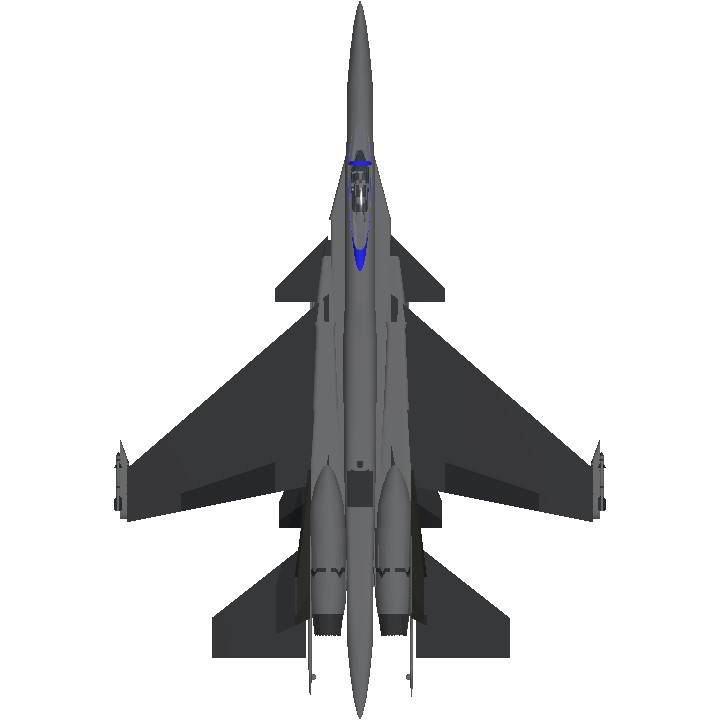Presentation Sheet: YF-20 Thunderclaw
General Information
Type: Air superiority fighter focused on dogfighting (4th generation, 4.5 variants)
Designer: Alpha Project Industries (Erusea)
First Flight: March 7, 1986
Service Entry: December 21, 1989
Primary Role: Air superiority, close-range dogfighting, and rapid interception
Units Produced: 2,150 units (all versions combined)
Status: Retired from primary roles but still in secondary service in Erusea and partner nations
Dimensions and Structure
Length: 26.8 meters
Wingspan: 19 meters
Height: 6.2 meters
Empty Weight: 15 tons
Max Takeoff Weight: 30 tons
Performance and Propulsion
Engines:
2 HPM-TF3000 turbofan engines, optimized for high thrust and aggressive maneuvers
Thrust with afterburners: 13,000 kgf per engine
Top Speed: Mach 2.4 (at high altitude)
Operational Ceiling: 20,000 meters
Range: 5,220 km (cruise mode at 16% thrust)
Combat Radius: 2,500 km
Maximum Flight Time: 8 hours 30 minutes (without refueling)
Exceptional Maneuverability:
High thrust-to-weight ratio for sharp turns and high angles of attack
Advanced aerodynamic controls for close-range combat
Additional canards for enhanced agility
Armament and Capabilities
Internal Cannon:
One 20mm rotary cannon optimized for close-range dogfights with a high rate of fire
Hardpoints:
12 hardpoints (4 under the fuselage, 8 under the wings)
Capable of carrying short-range air-to-air missiles (e.g., SSH-120 or local equivalents) and medium-range missiles (e.g., SSE-60 GN)
Payload Capacity: Up to 8,500 kg of armament, additional fuel tanks, or electronic systems
Technology and Avionics
Radar:
4th-generation Doppler radar optimized for long-range detection and multiple target locking
Electronic Warfare Systems:
Integrated jammers to counter enemy radars and improve combat survivability
Advanced Avionics:
Partially digital cockpit with a heads-up display (HUD) and helmet-mounted sighting system compatibility
Fly-by-wire controls for optimal maneuverability
History and Development
Context:
In the early 1980s, Erusea developed the YF-20 as a response to modern Soviet fighters like the Su-27 and MiG-29, as well as Western aircraft such as the F-15 and Mirage 2000. The goal was to create an aircraft that excelled in close-range dogfights while maintaining long-range air superiority capabilities.
Key Phases:
1982: Program launch with simulations focusing on dogfight performance and maneuverability
1986: Successful first flight with dogfighting capabilities exceeding expectations
1989: Entry into service with the Erusean Kriegermarine and Air Force; deployed for NATO patrols and exercises
Engagements:
1990–1995: The YF-20 proved superior in NATO joint exercises, often outperforming counterparts due to its exceptional maneuverability and flight endurance
2000–2010: Modernized variants were introduced to stay competitive against 5th-generation aircraft, such as the YF-25 Dragon
Notable Variants
YF-20A: Base model, optimized for dogfighting and interception
YF-20B: Two-seat variant for advanced training and tactical reconnaissance missions
YF-20C/D: Modernized versions with AESA radars, enhanced electronic warfare systems, and reduced radar signature
Critiques and Legacy
Strengths:
Exceptional maneuverability, ideal for dogfights
Robust and reliable design in hostile environments
Ability to maintain air superiority against formidable adversaries
Control Features
AG-1: Cockpit functions
AG-2: Additional controls
AG-3: Ejection system
AG-4: Auxiliary features
AG-5: External fuel tank jettison
AG-6: Parachute deployment
AG-7: Arrestor hook deployment
AG-8: Miscellaneous systems
VTOL: Aerodynamic braking
TRIM: Manual stabilization
Specifications
General Characteristics
- Created On Android
- Wingspan 59.4ft (18.1m)
- Length 87.8ft (26.8m)
- Height 20.9ft (6.4m)
- Empty Weight 29,387lbs (13,329kg)
- Loaded Weight 52,484lbs (23,806kg)
Performance
- Power/Weight Ratio 5.138
- Wing Loading 38.4lbs/ft2 (187.4kg/m2)
- Wing Area 1,367.7ft2 (127.1m2)
- Drag Points 3182
Parts
- Number of Parts 188
- Control Surfaces 6
- Performance Cost 1,552






